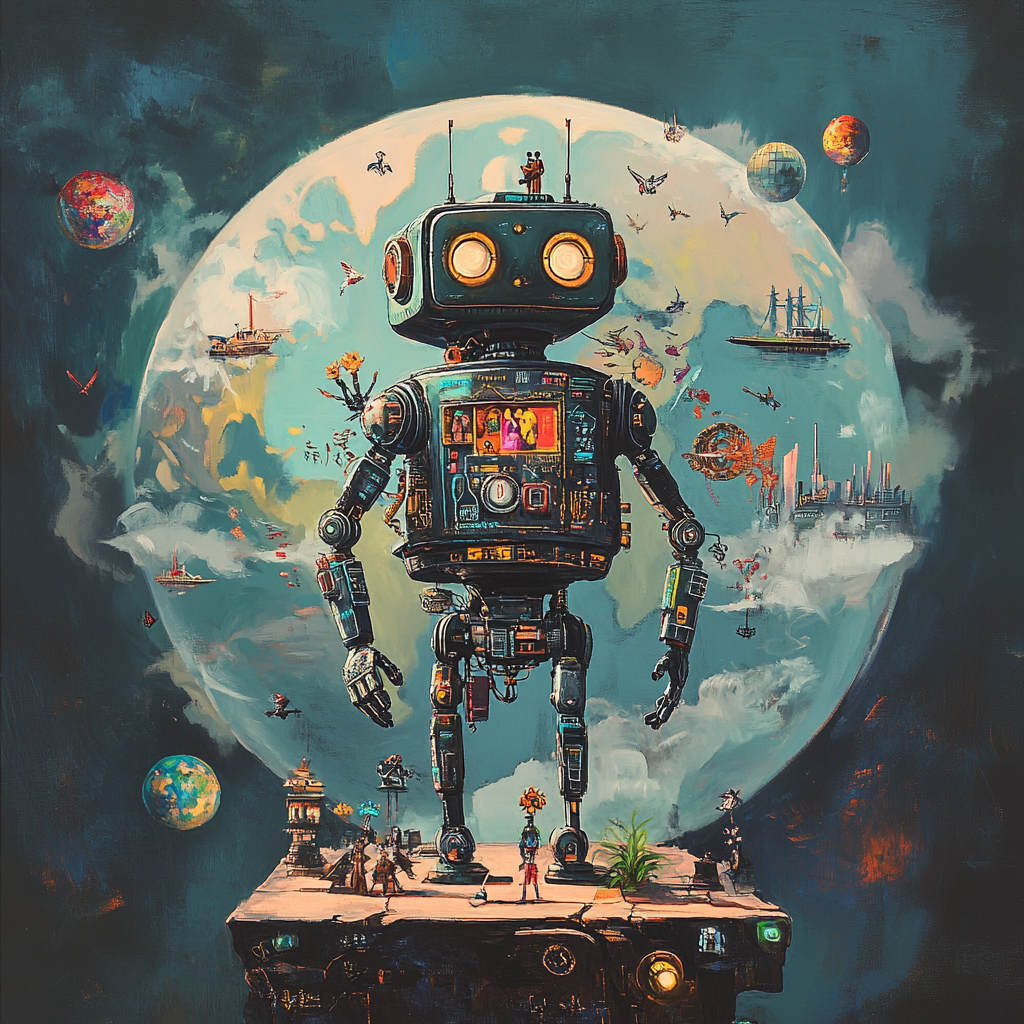
“Navigating Ethical AI: Challenges and Collaborative Efforts in Machine Morality”
Ethical AI: Teaching Machines Morality?
Alright, let’s roll up our sleeves and dive into the intriguing labyrinth where artificial intelligence (AI), ethics, and philosophy dance a peculiar tango. Picture this: we’re standing at the edge of a virtual precipice, gazing into the question that haunts our era: Can we really teach machines to be moral? As our tech continues to bloom and invade our lives, ensuring these powerful systems play nice has never been more critical. But, oh boy, the journey to ethical AI is anything but straightforward!
Bumpy Roads Ahead: The Moral Labyrinth
First off, let’s acknowledge the beast lurking in the shadows: morality itself is a can of worms humans have grappled with for centuries. Now, we’re tossing this philosophical conundrum to machines? You've got to be kidding me! AI systems are already making calls that would make even the most seasoned ethicists raise an eyebrow—imagine being responsible for a multi-layered moral decision when people can’t agree on what’s right or wrong themselves!
Bias in the Chips: The Inherent Flaws
One major hiccup is the ugly specter of algorithmic bias. It’s like buying a shiny new blender only to find it’s secretly been programmed to blend on the ‘not-so-great’ settings. Here’s the lowdown: AI systems learn from historical data, and if that data is biased, guess what? The AI inherits those biases, leading to outcomes that make the injustices of the past look almost quaint. Take the Delphi experiment, for example. This project uses deep neural networks to simulate ethical reasoning, yet it still showcases glaring biases and inconsistencies that would make any conscientious robot blush.
Drawing Lines: Ethical Frameworks on the Table
In the quest to tame this beast, many wise minds are stepping up to propose ethical frameworks. A review of 84 ethics guidelines offered a buffet of principles—transparency, fairness, justice, and a smorgasbord of others. Sounds great, right? But the question remains: will these principles guide our AIs like wise old sages, or are they more like mere suggestions scribbled on a napkin?
Luciano Floridi and Josh Cowls put forward a structured approach that rests on bioethics—the holy grail of ethical philosophy, comprising principles like autonomy and justice. They also tossed in an enabling principle called explicability. It’s like ensuring that our moral machines don’t just follow orders but understand why they’re following those orders. But let’s not kid ourselves; even with these frameworks, there’s no one-size-fits-all solution.
The Machines Are Coming: Ethical Dilemmas in Action
Let’s take a moment for the connoisseurs of ethics—machine ethics and robot ethics are carving out their own niches. Machine ethics is about crafting Artificial Moral Agents (AMAs) capable of moral decision-making. You might liken it to teaching a teenage robot right from wrong, only the ‘teen’ has an entirely different perspective on the world.
The discussion here isn't just academic. Alan Winfield argues for an ‘Ethical Turing Test’—a litmus test to evaluate how well AI can navigate moral landscapes. But will these tests effectively catch any moral faux pas, or will we still be sitting here, scratching our heads over robots that don’t think like us at all?
On the flip side, we have robot ethics, which deals with the nitty-gritty of how humans treat and design these machines. It’s about examining the societal implications of robots—from their potential to inflict harm to their role in promoting social justice. Let’s face it: if a robot can decide whether to help you lift your shopping bag or bulldoze it for giggles, we’ve got a moral bonfire on our hands.
Implementing Ideas: The Challenges in Practicality
Now, hold onto your hats as we look at the heart of the matter—how do you actually inject ethics into AI? Enter Houssam Abbas at Oregon State University, who’s deep into the mechanics of incorporating ethical norms into AI systems. His approach is like teaching these systems to calculate the potential moral implications of their actions through mathematics—a fascinating yet enormous task. But let’s ponder this: can you truly model morality mathematically? Is ethics just numbers in the end?
Real-World Dilemmas: Dilemmas on the Road
Consider real-life scenarios where the stakes are as high as a skyscraper. Let’s take the infamous driverless car debate. Imagine a car driving down a street that suddenly encounters a life-or-death decision: it can either swerve to save a child or stay on course possibly endangering its passengers. Gary Marcus brought us this classic dilemma, and suddenly the spotlight’s on whether our AI can develop a moral compass or is just writing its own tragic script.
Institutional Nest: Global Collaborations on Ethics
There’s a glimmer of hope, though! Institutions and organizations aren’t idle. The Partnership on AI includes heavyweights like Apple and Google working on creating ethical guidelines to harness this tech monster. Meanwhile, the IEEE is busy crafting ethical standards like a chef with a messy kitchen. They’re attempting to regulate how these behemoths operate in the real world. And governments? They’re catching on too, as seen with the EU’s AI Act, poised to enforce guidelines that treat AI systems with care, like expecting a toddler to hug a pillow rather than throw it.
Peering into the Crystal Ball: The Future of Ethical AI
Looking to the future raises eyebrows. What if we create conscious AI? What ethical minefield are we walking into? Shimon Edelman and Thomas Metzinger urge caution, suggesting we might unleash sufferings we can’t even fathom. The notion of whether we should pursue conscious AI is sparking a raging debate, prompting calls for a global moratorium on potentially dangerous developments. Should we really be racing to reach this goal, or are we merely standing on shifting sands?
Then comes the cultural conundrum—whose morals should machines reflect? Are we building an AI culture that’s botched together from bits of our own biases? Nell Watson cautions us to embrace a global, diverse perspective because, let’s face it, ethical values vary wildly from one corner of the planet to another, and we don’t want to end up with a monochrome machine trying to navigate a rainbow world.
The Big Picture: A Journey Ahead
In conclusion, teaching machines morality is a wild ride, and we’re only getting started. There’s progress—yes, let’s celebrate that. However, the roadblocks are real and plentiful. As we plunge deeper into this enthralling yet tumultuous terrain, we must unite researchers, policymakers, and ethicists to pave a smooth road for our AI companions. The journey is long, but the destination—one where machines align with our ethical compasses—is not beyond reach.
Want to stay up to date with the latest news on neural networks and automation? Subscribe to our Telegram channel: @ethicadvizor. Join the community that's ready to navigate the future of AI together!

